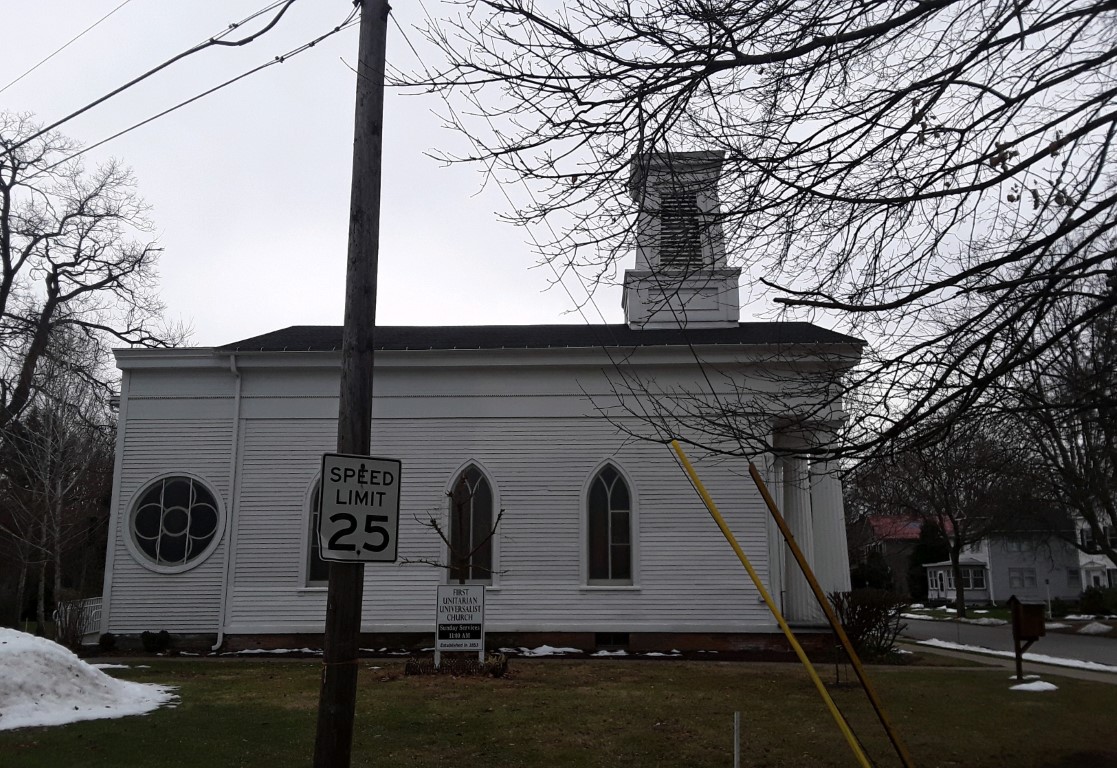| PROPERTY INFORMATION | ||
|---|---|---|
Historic Name |
First Universalist Church |
|
Address |
107 Myrtle Street |
|
Municipality |
||
Tax Parcel |
||
Historic District |
|
|
Classification |
Class 1 (Definitions of Classes) |
|
State Key Number |
15854 |
|
Historic Function |
Religion - religious structure |
|
Style |
||
Built |
1852 |
|
Architect |
|
|
Builder |
|
|
Barn Type on property |
|
|
Last Entry Update |
6/28/2016 |
|
| HISTORY |
Girard’s First Universalist Church was originally erected in 1852,
though the Universalist Church had officially come together as an
organization in 1848. In 1907, the church came together and unanimously
decided as a community to enlarge the existing structure and modernize
the sanctuary. Besides these facts, not much is advertised about the
Church’s long and complex history. Simply reading their website, a
reader would not understand the remarkable story this building has to
tell about the Civil War and the Underground Railroad’s presence in
Pennsylvania (specifically Erie County). |
Sources: Erie County Historical and Architectural Preservation Plan, Erie Metropolitan Planning Department, June 1976; Gensheimer, Lisa. "Time Travel on the Underground Railroad." Erie Times News, 2013 |
| DESCRIPTION |
| LINKS AND ATTACHMENTS |
| UPDATE |
If you have additional information or corrections to the existing information, send an email to info@preservationerie.org.
|
| CURRENT ASSESSMENT PHOTO |
|
| PHOTO FROM 2014 SURVEY |
| HISTORIC PHOTOGRAPHS |
